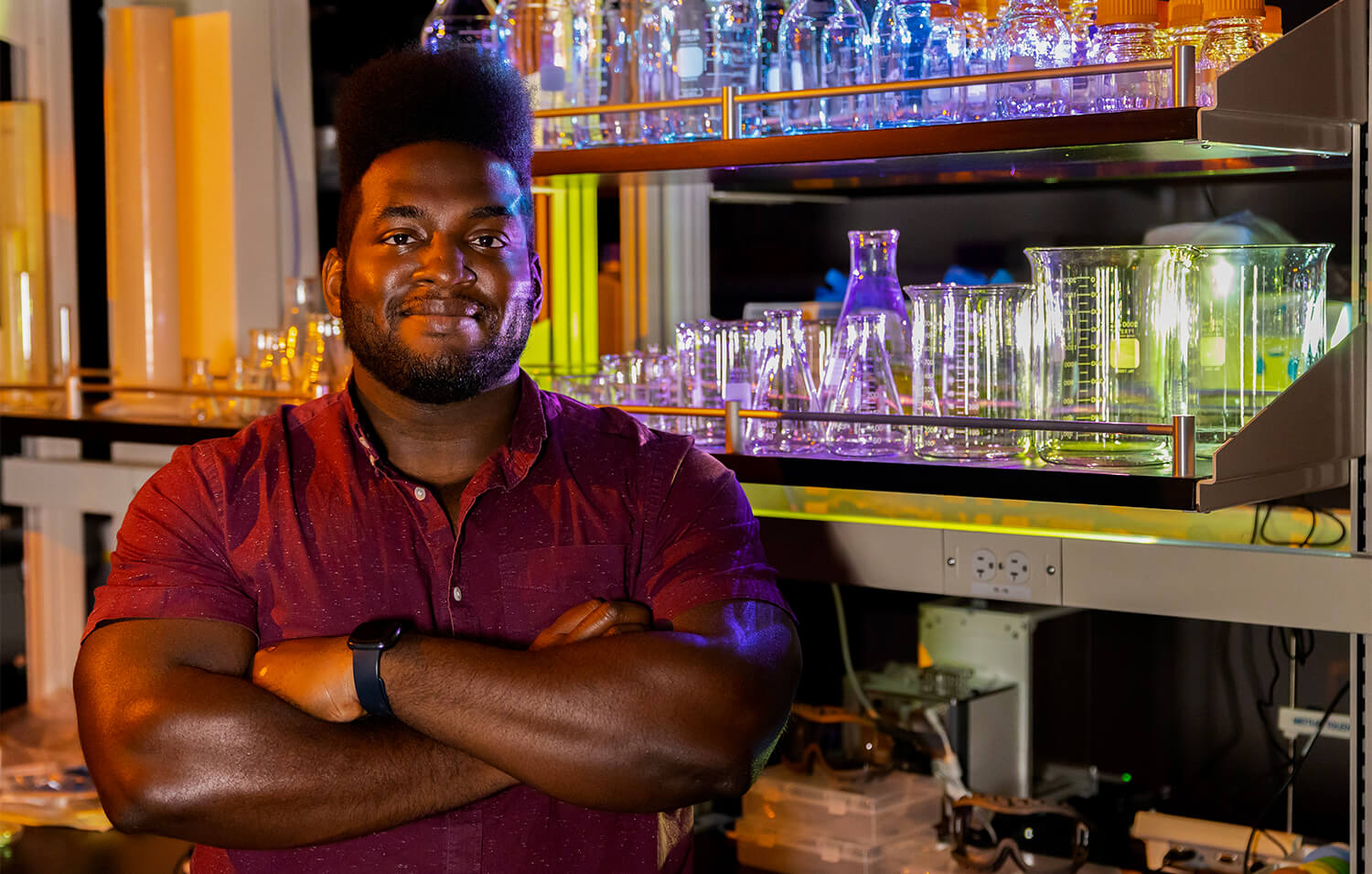Diving Below the Surfaces of Cells to Fight Diseases

a Seoul-based biotech startup. (Photo/Helen Perez)
Wade Zeno tried to banish any thoughts from his mind.
It wasn’t easy with nearly 700 pounds on his shoulders. It was the United States Powerlifting Association Big Tex Open in 2019. The gym was buzzing. Metal guitars blasted from the speakers. If he finished the squat, he would win his class and reach a new personal best. An audience member screamed out, “C’mon, Wade, you got this!”
As he gripped the iron bar, his mind flashed to his research in cellular biophysics. “Are my cells generating enough ATP right now? Is there enough glycogen in my muscle cells to get through this lift?” Zeno was likely the only person in the gym thinking about nutrient transfer and cellular respiration in that moment.
With a roar, he dropped into the squat and heaved the giant weight back up.
The crowd erupted.
As a child with a natural curiosity for the world, Zeno was fascinated with how humans work. His mother was a nurse, and he used to snoop through her textbooks, eager to learn more.
Now, as an assistant professor in the Mork Family Department of Chemical Engineering and Materials Science at USC Viterbi, it’s no surprise that Zeno is working at the cutting edge of biology and engineering, looking closely at the proteins and membranes of human cells to understand how they function, and how to create better treatments for debilitating diseases such as Parkinson’s and cancer.
A cell’s plasma membrane, like the gates of a castle, is designed to keep out dangerous things — think disease-carrying bacteria rather than medieval armies. It also allows safe passage to helpful things like nutrients inside the cell.
“It selectively lets things in and out of the cell,” explained Zeno. “The molecules there are mostly composed of proteins and lipids, and their interactions form this interface. Many of the most critical processes that occur in a cell, occur right here.”
Zeno’s research is all about understanding the behavior of cell surface molecules, with a particular focus on how the curvature of these membranes affects protein-lipid interactions. This curvature is important in allowing the movement of molecules into and throughout the cell.
“Pieces of the membrane get trafficked around the cell for various processes. When there’s a defect in that process and it’s not functioning properly, this leads to diseases like cystic fibrosis, diabetes, Parkinson’s and certain types of cancers,” Zeno said. “Membrane trafficking is also one of the routes through which pathogens can get in and hijack your cells.”
But membrane trafficking can also be used for good. It’s the process used to deliver treatments directly to our cells. “For example, the COVID vaccines use the membrane trafficking route to get the vaccine particles into your cells,” Zeno said.
Zeno’s latest project is a collaboration with Seoul-based biotech company Biographene on nanoparticles that can interact with proteins and lipids on cell membranes to treat Parkinson’s disease.
Zeno, who joined USC Viterbi in the fall of 2020, was recently awarded the USC Provost’s Assistant Professor Fellowship.
It was during Zeno’s undergraduate studies at the University of Nevada, Reno, after working as a tutor, that he began considering a career in academia.
“I really developed a passion for teaching, education and helping others, and I knew I wanted to become a professor,” Zeno said.
In his senior year, he took a class in bioengineering, which set him on a path to his future career in biophysics, a field that uses the tools of physics to solve biological problems. He dove further into this area during his graduate studies at the University of California, Davis, and his postdoctoral research at the University of Texas at Austin, where his work on protein and lipid interactions in cell membranes was published in the journal Nature.
As Zeno’s interest in human biology grew, so did an interest in understanding and pushing the limits of human physical achievement. He fell into the sport of powerlifting during graduate school and has competed in various competitions around the country. His personal-best lifts could see Zeno carrying the equivalent of a large tiger, with a bench press record of 500 pounds, and squat and deadlift bests of 680 pounds.
“During grad school is a time when you get more control over your schedule, so that’s when I started working out. I noticed that I was just better at lifting weights than I was at running on the treadmill,” Zeno said. “I was squatting one day and someone said, ‘You’re pretty strong. Ever consider doing a powerlifting competition?’” I didn’t know what that was, and so I looked it up and thought I could do that for fun.”
While the pandemic has put his competition career on hold, Zeno recently ventured back into his COVID-safe gym.
“I’ve definitely been out of practice over the last year, but it’s all coming back. It’s all muscle memory,” Zeno said.



